By (heavily belated) popular demand here’s a stab at ‘common-practice’ chord progressions in major and now minor keys!
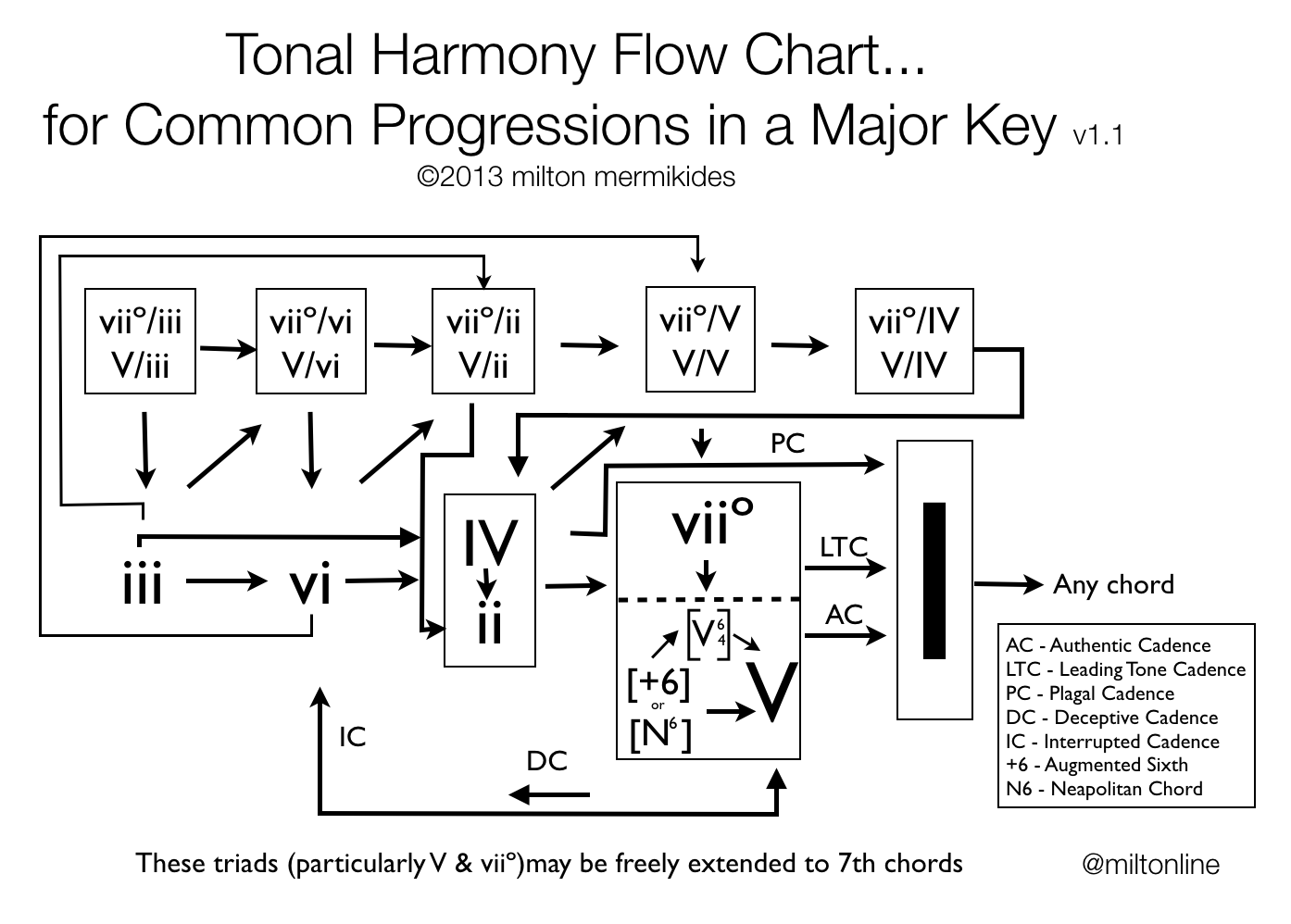
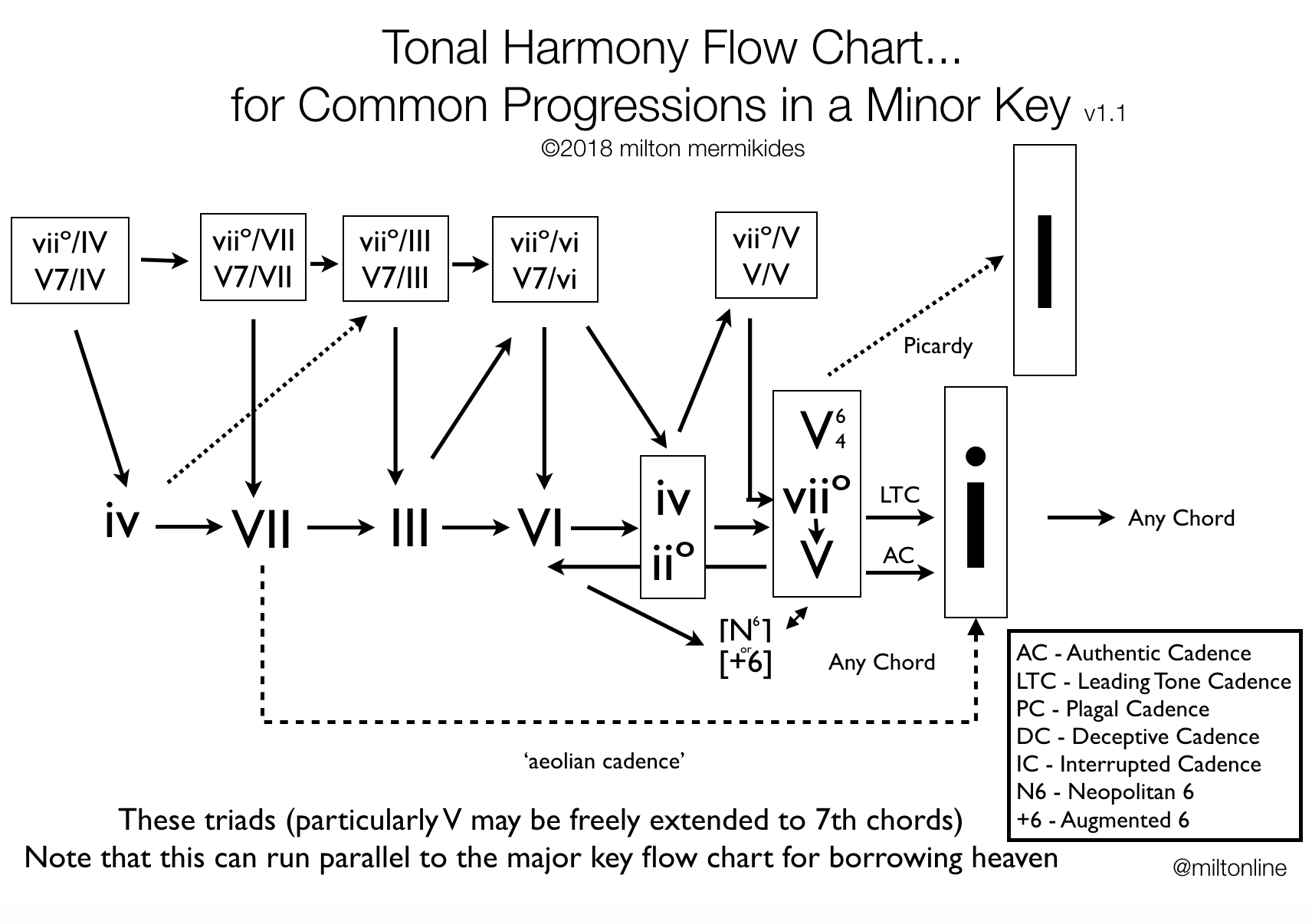
By (heavily belated) popular demand here’s a stab at ‘common-practice’ chord progressions in major and now minor keys!


Really looking forward to being on this fabulous panel at the fabulous QED conference in fabulous Manchester. Panel on 14th October 2018 Time TBC
Truth Hertz – join @Rick_Owen, @carmenego, Ann-Marie Cundy, @miltonline and @sophiescott as they reflect some of the wisdom of science on the mystics of music, the audiophiles and the numerologists at #QEDCon2018 https://t.co/cjcifOrSLf pic.twitter.com/nXQDZJADSq
— QED (@QEDcon) October 6, 2018
My deep interest in the fields of (micro/macro) rhythm and data music, came together in the BBC Radio 4 ‘The Rhythm of Life’ 2-episode series presented by Evelyn Glennie. A great pleasure to chat rhythm and music translations with her, among fabulous Bridget Riley prints at the Tate Britain. I appear briefly at the end of Episode 1, but with more to say in Episode 2 The World as an Orchestra.
Listen live on Tuesday 28th 2018 and September 1st 2018 11.30am, or catch up after the first airing here
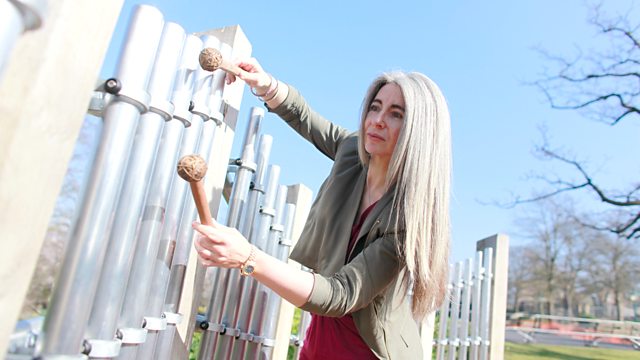
Here’s some background
Virtuoso percussionist Dame Evelyn Glennie reveals a hidden world of rhythm around us and searches for musical inspiration from some unlikely sources.
As a musician and rhythm obsessive, Evelyn has always beenfascinated by the rhythmic nature of the world around us. She explains that, by learning to focus our attention, we can tap into a complex realm of energy and pattern in our surroundings. Over the course of the programme, Evelyn tunes into everything from the oscillation of a tree in the wind to the polyrhythmic groove of our solar system.
Visiting the Mini plant in Oxford, an enormous factory that beats out a steady meter of 1000 cars a day, Evelyn surveys the endless rows of robotic arms and describes the location as “like being in a massive percussion instrument”. Walking around the factory, Evelyn is desperate to “play the space”. Back in her studio, surrounded by percussion instruments, she does exactly that – hammering out a metallic improvisation inspired by the rhythms of the production line.
Evelyn explains that she has always drawn inspiration from non-musical art forms. At Tate Britain, surrounded by prints by Bridget Riley, Evelyn meets the composer Milton Mermikides who uses digital technology to translate Riley’s famously rhythmic paintings into mesmeric music. Evelyn also performs a percussive piece in response to the looping rhythms of Riley’s work.
Finally, Evelyn gazes up at the buildings that line the Thames with composer Peter Adjaye, whose work is heavily influenced by the rhythm of architecture. Evelyn explains that, like a piece of music, a building is a composition based on structure, ornamentation, repetitive patterns and layer upon layer of rhythm.
Presenter: Evelyn Glennie
Producer: Max O’Brien
A TBI production for BBC Radio 4.
A max/msp/Ableton Live tool I’m building to aid my hidden music projects. So many possibilities, these are literally first-go unpolished demos. Images by Bridget Riley.

(artist recreation)
My experience:
Monday: horror. Look up appointments nearest Wednesday Afternoon: Peterborough (London on Friday), next morning managed to get Wednesday AM in London, countersignatory rejected, Thursday AM it’s accepted. Friday PM a text that said (basically) “approved it ill be there in a few days”. Tuesday AM a text in am “It’s coming today”. Tuesday 2-3pm passport arrives (posted through door).
Anonymous 1: Tuesday AM Appointment (Peterborough), Thursday “few days” text, Friday passport arrives (nice).
Good luck, my idiotic friend, you will get it sorted and there are many adventures ahead.
An incredible experience providing the keynote presentation at the Hong Kong Academy of the Performing Arts as part of the 3rd Altamira Guitar Symposium and International Guitar Research Conference. The paper Nuages: Rhythmic Diffusion in the music of Roland Dyens explores the extraordinary rhythmic sensibilities of the recently departed guitarist/composer, and was an honour to be given the opportunity for such a tribute, in such an amazing venue among such company.
Looking forward to joining the great team of Justin Sandercoe, Bridget, Jon Bishop, Steve Allsworth at the tuition clinics at the UK Guitar Show 29-30 September 2018 at the Olympia Exhibition Centre. I’ll be doing two fun sessions:
Uncaging Rhythm Guitar (29/9/18 1.30-2pm)
Jazz Guitar for Mortals (30/9/18 12.30-1pm)
Full details below
https://www.musicradar.com/news/justin-sandercoe-leads-uk-guitar-show-tuition-clinic-announcements
https://www.ukguitarshow.com/speakers/milton-mermikides

Trying to push my Push skills up a peg with Peg and Steely Dan’s gorgeous µ harmonies.
…I wish.
Delighted to be giving the final public lecture for the Physiological Society’s snappily titled Sleep and Circadian Rhythms from Mechanisms to Function event as part of their 2018 Year of Sleep initiative. December 6 2018 Barbican, London. More details to follow.

https://www.physoc.org/sleep_circadian/sleep-and-circadian-rhythms-mechanisms-function
Careful at the Rose Main Theatre, Kingston June 5 2018 2pm – This unique dance/theatre performance puts you in the care of five over-stretched nurses as they struggle to balance empathy and efficiency, compassion and clinical proficiency. Inspired by its makers’ experience of long-term hospitalization, Careful celebrates the skill, beauty and toil of professional nursing as seen through the eyes of the patient. Introduced by Professor Karen Norman, a leading expert in nursing, the performance forms part of The Art of Nursing, an annual event hosted by Kingston University and St George’s hospital.
This event is designed for students and professionals of nursing, though members of the public are very warmly welcomed to attend.
Careful was developed in collaboration with the Clinical Skills and Simulation team at Kingston University and St George’s University London. The collaboration has also led to the development of workshops designed to enhance self-awareness and non-technical skills of patient care, which now form part of the Nursing practice curriculum.
Careful is a project by Chimera, an arts company/research network dedicated to making engrossing artworks about, for and with the medical and healthcare sector. Led by Dr Alex Mermikides (Guildhall School of Music & Drama) and Dr Milton Mermikides (University of Surrey), we also create impactful events for students, researchers and the general public. Our work has been supported with funding from the Arts and Humanities Research Council and Arts Council England. www.chimeranetwork.org.
Duration 90 minutes, including introductory talk and post-show discussion. Please note that the event will be filmed for evaluation and publicity purposes. Book FREE tickets here
Here’s another classic process piece used as a ‘Push Etude’, Steve Reich’s Clapping. Even though it was written after Piano Phase, it is somewhat simpler (certainly to perform), relying on discrete rather than continuous phasing, so fits well into the discrete conceptual world of MIDI rhythm. The challenge here is to program the seminal pattern (which can be heard in triple or duple time like much of Reich’s Ewe-inspired phase pieces). You could of course play it in but I’m trying to roast my Push 2 programming chops. Duplicate the track and then shift it over in steps (you could also set global quantise appropriately and restart one clip at the appropriate metric point, but I wanted to make use of the lovely clip view now available). Unfortunately the push has little control over the fine control of offset, a shift move (as far as I can tell is always a semiquaver (1/16)) so I’ve set the Set to 6/8 rather than 6/4. I’m not sure of a more elegant way to reset the start offset other than how I did it, let me know if you can!
Being an 8×8 grid (we do generally reside in the normative binary default rhythmic world like it or not), the Push represents the 12 slots over a row and a half (I’d like to be able to move the rows into 6s for example) so imagine it like this:
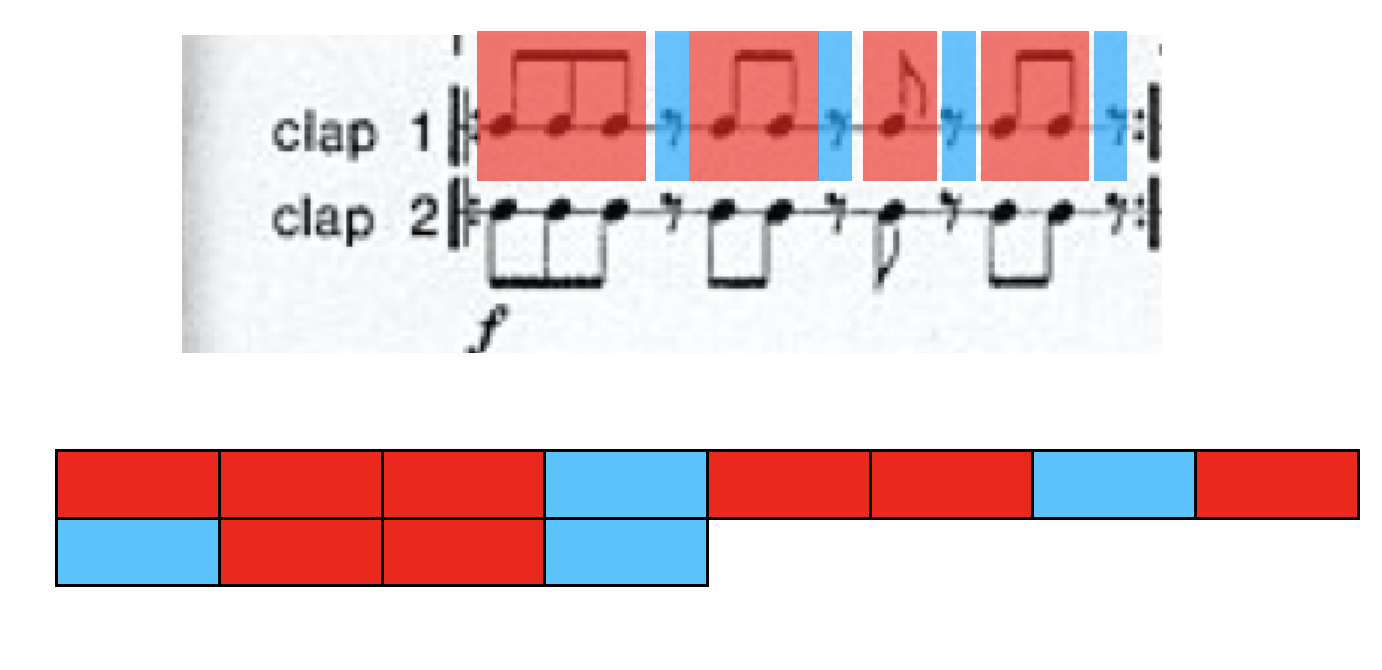 You can then apply the pattern to melodic material as I’ve shown later in the video. Enjoy, njoye, joyen, oyenj, yenjo, enjoy.
You can then apply the pattern to melodic material as I’ve shown later in the video. Enjoy, njoye, joyen, oyenj, yenjo, enjoy.
Ableton Push 2 and Live 10 are incredible devices, both progressive and able to integrate seminal electronic, process and generative creative practices. In order to start exploring their potential I’ve been experimenting with recreating classic works as succinctly and fluently as possible. Here’s Steve Reich’s Piano Phase using just one track and Live 10 and Push’s new melodic sequencer layout which I find hugely valuable.
In essence you can break down the classic theme into its component pitches, and reform them by pitch rather than rhythmic placement.
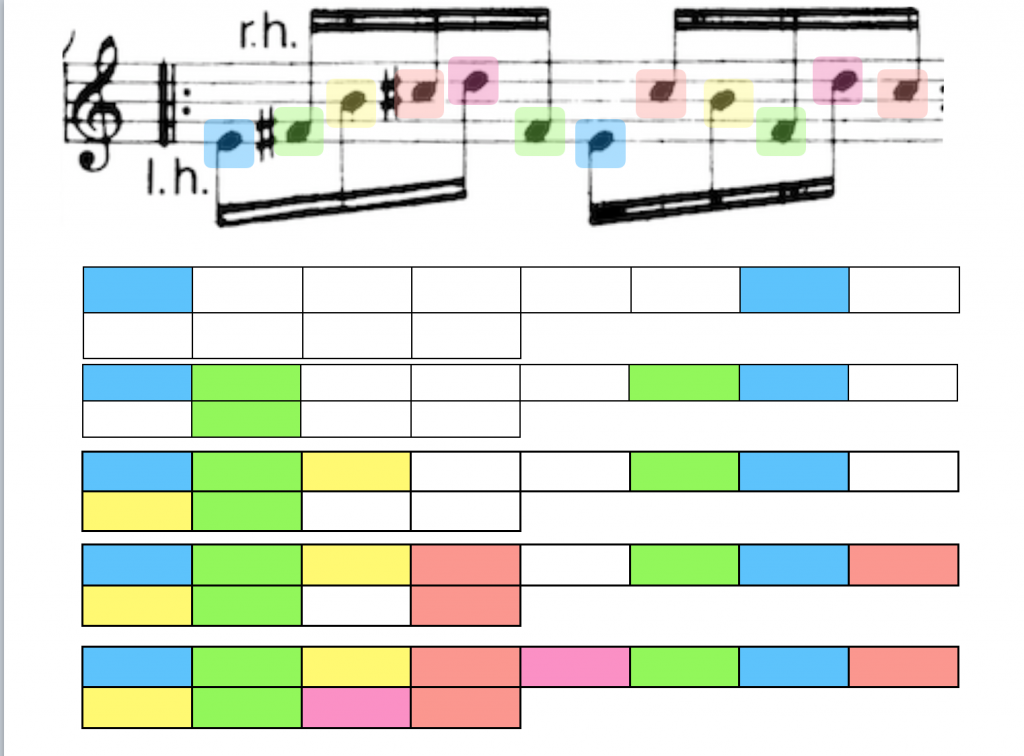
Here’s the video and Live Set to explore. Piano Phase Push 2 Project
Quick overview: Set scale on Push to E Dorian and form the patterns from above on teh 1st, 2nd, 5th, 6th and 7th degree of the scale respectively. Once you can do this it can be fun to enter them in diferent orders, add chords to each of them and of course use in your own improvisational/compositional practice.
The phasing is super simple (naive really) each dial completes a rotation so you can settle on each semiquaver confidently before moving to the next rotation. This could all be done in microtemporal MIDI (creating fewer artefacts) with M4L devices but I like the ‘in-the-box’ constraint, maximising pre-existing tools.
Piano Phase Push Project (change the MIDI instrument to whatever you like)
Very satisfying to receive this series of books from OUP at long last. Very pretty looking academic books, if you can believe that. My chapter with Eugene looks quite cool including all those brain bending Coltrane Cubes, M-Space and improvisational fields.
Available here
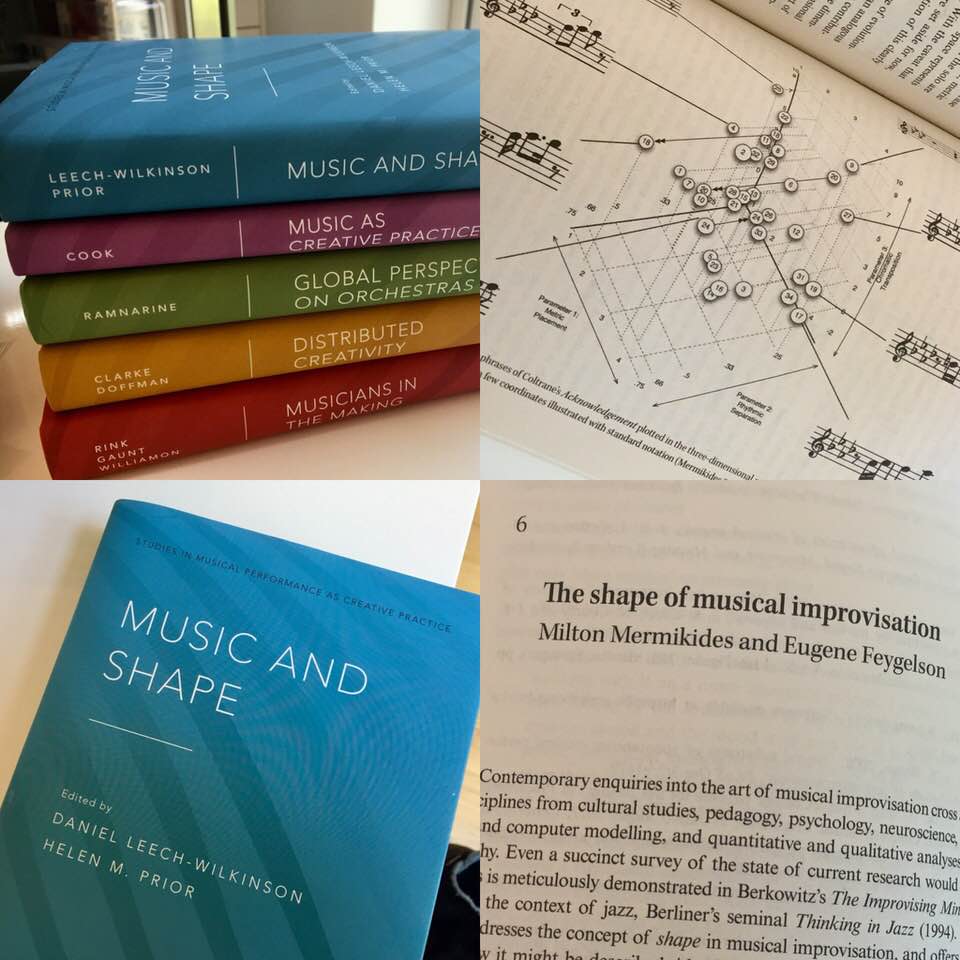
On Friday 23rd March, I’ll be giving an Ableton-hosted workshop at the CCA, Glasgow on Breaking 4/4 – rhythmic shenanigans galore.
Booking here and details below.
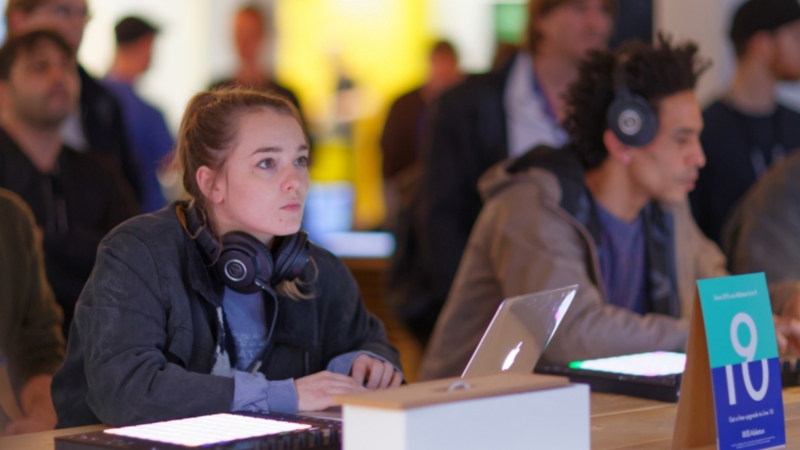
Renowned TedX Groningen and Ableton Loop keynote speaker, Dr Milton Mermikides and Ableton Certified Trainer Phelan Kane take a look at some less than conventional ways to generate rhythms and sound. Using Live and custom Max for Live devices, this workshop introduces a range of tools and methods to break out of standard repetitive cycles of electronic music composition. Through a series of exercises using custom-built Max for Live devices, they’ll explore Euclidean sequencers, odd meter, micro timing, hypermeter, swing and latency, with the aim of unleashing your creativity and exploring uncharted territory beyond the standard 4/4 landscape.
Bridget and Milton Mermikides will be performing their classical guitar and live electronic project, Tension Blue at Canterbury Christ Church University, preceded by a talk on Milton’s Hidden Music series. Wednesday 24th January 2018, St Gregory’s Centre for Music (Talk 11.45am, Concert 1.10-2pm), Free Entry.
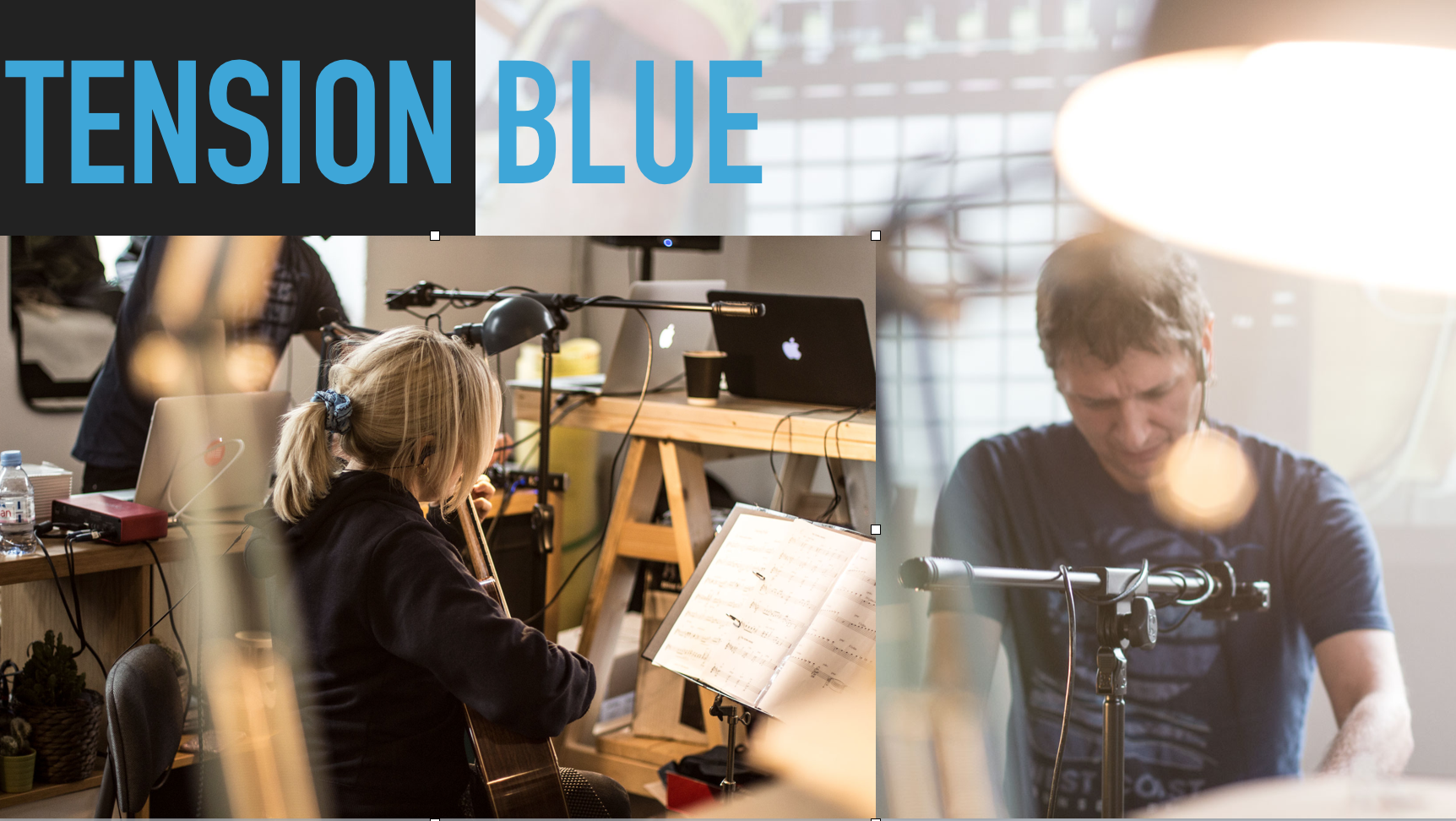
It has been a wonderful experience writing and making music for a stage adaptation of Ralph Ellison’s sublime/vital/classic novel Invisible Man. The author Ralph Ellison was a jazz trumpeter and cornet player, a student of symphonic composition, a deep connection with African music and a radio/electronics fanatic. Being allowed, even obliged to employ an eclectic blend of jazz, modernist, electronicism and African rhythm; as well as ‘working’ with the unnecessarily talented and lovely team of actor Clarence Smith, directors Anna Girvan & Tinu Craig, African percussionists Sola Akingbola (Jamiroquai) & Richard Olatunde, and of course the cellist prodigy Laura van der Heijden was/(continues to be) an immense privilege and joy. More about the emerging project here: invisiblemanplay.wordpress.com
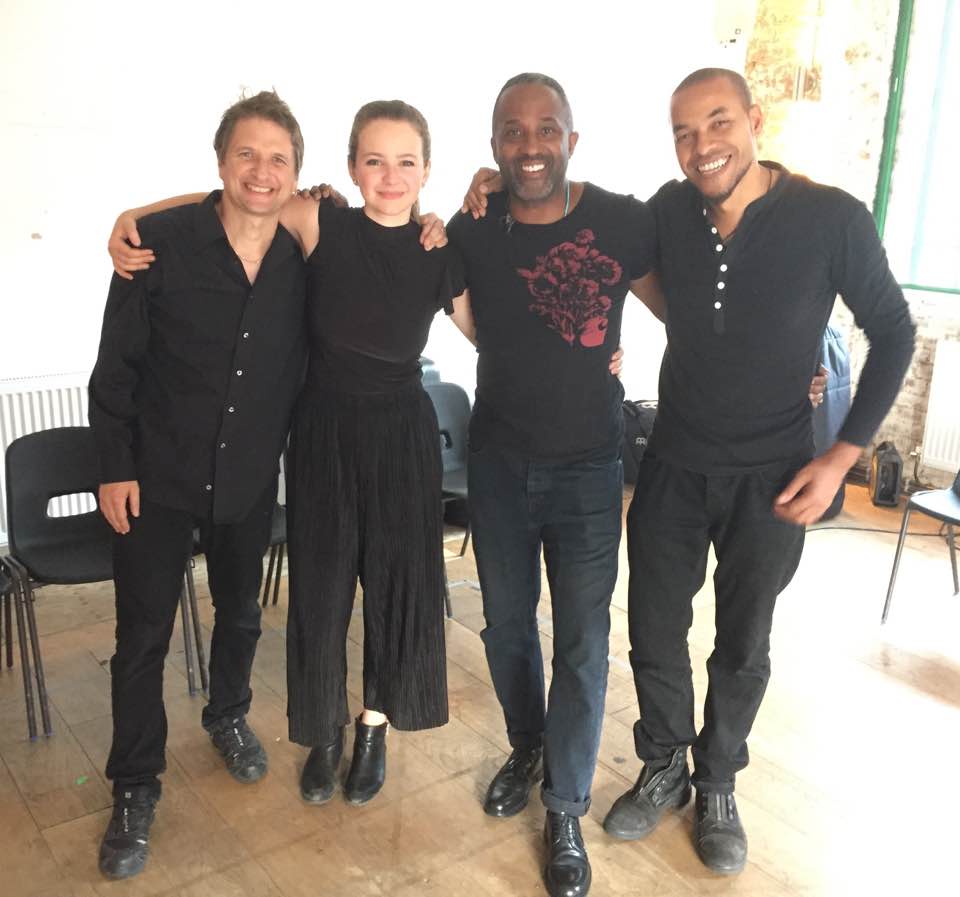
Does practice really make perfect or do musicians need a special innate ability to succeed? Neuroscientist Vin Walsh joins psychologist Lauren Stewart, music teacher and researcher Adam Ockelford, and composer and guitarist Milton Mermikides to discuss musicality, whether you can teach musicianship, and why some of us are more drawn to making music than others.
Tue 6 Jun 2017 8:30pm – 9:30pm
Cheltenham Science Festival
Parabola Arts Centre, Cheltenham Ladies’ College £8 plus transaction fee
http://www.cheltenhamfestivals.com/science/whats-on/grid
Looking forward to being part of this panel discussion (click for tickets and info)
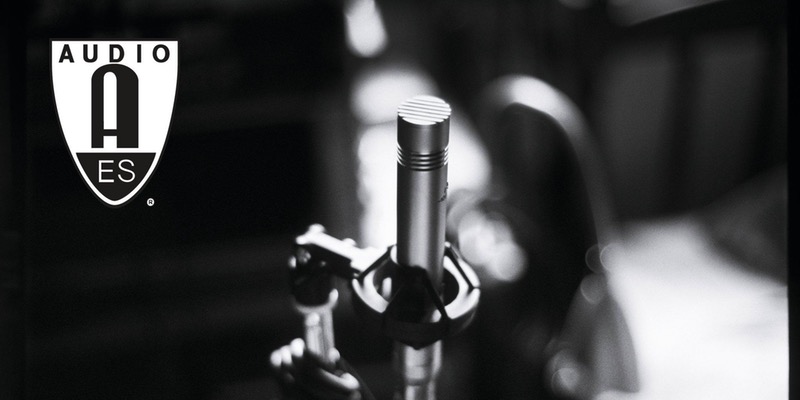
The first event in a series, the AES London Committee present a discussion exploring the relationship between creativity and technology. Chaired by Phelan Kane (Chair of the AES London Regional Committee), the aim is to create a dynamic forum that features free flowing discussion and debate with contribution from panel and audience members alike.
The purpose of this evening is to explore the relationship between technology and creativity within the landscape of modern audio practice. What form does this relationship take? How do modern audio practitioners use technology creatively within their everyday practice and what role does the technology play? How important is the creative output of practitioners within the development of new audio paradigms? How is R&D influenced by current creative workflow trends? Does the realisation of R&D lead to new creative workflows and to what extent do creative workflows influence the R&D process?
Confirmed Panel Members:
A fantastic article by Guardian journalist/leukaemia warrior Hannah Partos on the Arts Council-funded project Careful – which focuses on the lives of 4 nurses – written by Alex Mermikides, and with music (based on the sounds and rhythms of the hospital) by Milton Mermikides.
Swing friction is a term I coined in my PhD thesis and is defined as the differential of swing values between individual performers (or groups of performers). If the swing friction is significantly large and consistently maintained, it may form a characteristic of ensemble feel.
Chuck Berry’s Johnny B. Goode (Berry 1958) provides an instructive example of swing friction. Berry, often considered the father of rock n’ roll, was instrumental in ‘straightening out’ the blues 12/8 shuffle rhythm into the archetypal electric guitar riff. Johnny B. Goode features this ‘straight 8th’ guitar rhythm, as well as equally straight lead playing juxtaposed with a stubbornly bouncy drum, bass and piano feel. Heavily swung quaver values occur in the ride cymbal pattern, often near the 67% mark, a significant deviation of over 52ms from the straight quaver at 170bpm. The guitar rhythm part however remains resolutely straight rarely venturing beyond 52% swing. This already large 15% discrepancy of swing value is exaggerated with the guitar part often sitting on top of the beat (ranging between 0% and -4% latency) leading to a mean separation of about 17% (≈60ms). The lead guitar is equally straight, although not pushed, and occasionally falling behind the beat. Piano interjections are loose but quavers are generally quite swung, mainly in the 60-67% range and repeated quaver triplets prevail. The bass plays mainly crotchets, with the occasional quaver (usually ≈67%). A representative extract from the track can be heard here:
Figure 1 shows a composite two bar template for the lead, rhythm, bass and drum parts, with time-feel components added. There is a huge gap between the swing values of the guitars and bass and drums. The vocal track tends to fall in between these two extremes. In order to hear the effect of swing friction, This example contains electronic sequences of this section with varying time-feel values: 1) as from Figure 1, 2) all instruments at 67% 3) all at 52% 4) all at a middle ground of 60% and 5) back to the ‘true’ values for comparison.

Figure 1. Composite swing and latency values for guitars, bass and drums in Johnny B. Goode.
The sequences have been rendered with MIDI instruments on purpose; although the section would sound better with human performers, but the elimination of the inflection they would inevitably provide allows focus on the power – and limitations – of the SLW model. Mean values for swing and latency have been provided, but the standard deviations of these values introduce the component of looseness or tightness, again different between players. Weighting elements also occur, (the cymbal has a slight emphasis on offbeat quavers for example,) with both mean and standard deviations). This extract plays the sequence first as Figure 1 then with swing, latency, weighting standard deviations from Figure 2 introduced, which add a clearly-defined randomness to each of three time-feel elements, and instruments, individually. There is a subtle but appreciable difference between the sequences; attention to the cymbal pattern, for instance, will reveal a slight offbeat emphasis and looseness.
| Lead Guitar | Rhythm Guitar | Bass | Drums |
| µs= 51 ∂s=1.5 µl= 2 ∂l=
µw= -3 ∂w= 2 |
µs= 52 ∂s=1
µl= -3 ∂l= 1 µw= -3 ∂w= 2 |
µs= 67 ∂s=2
µl= 0 ∂l= 1 µw= 4 ∂w= 2 |
µs= 67 ∂s=2
µl= 0 ∂l= 0 µw= 2 ∂w= 1 |
Figure 2 Mean and standard deviation values of swing, latency and
weighting (measured as dB level)
An averaging out of time-feel components over the entire track runs the risk of over-generalization and may incorrectly group specific mechanisms that occur only occasionally. There are for example, brief moments when the bass seems to join with the rhythm guitar’s straight quavers. There is also the assumption, with a single matrix per instrument, that all beats of the bar are the same, which ignores the emphasis on crotchets 2 and 4 in the drums. Matrices could be provided for beats 1 and 2, and beats 3 and 4 separately, or even weighting at the crotchet level, for greater sophistication when needed.
Despite these acknowledged limitations, the discretionary use of this type of analysis allows for an instructive and parsimonious description of ensemble time-feel elements.
There is an obsession with musical categorisations and typologies. For the economies of marketing, education packages, community ‘identity’ and comfortable partitioning into high, low, serious & fun these artificial stylistic delineations persist. I am more interested in the common themes, processes and craft between these styles and the creation of musical works born of an open sharing. A challenging, blending and melding of the boundaries of musical style, and of the limits of music perception, processes and accessibility. For lack of a better term, and an awareness of the Russelian irony of naming a musical genre based on the resistance of genres, I quietly call this pursuit of universal musical craft liminalism.
Feel free to adopt or reject.
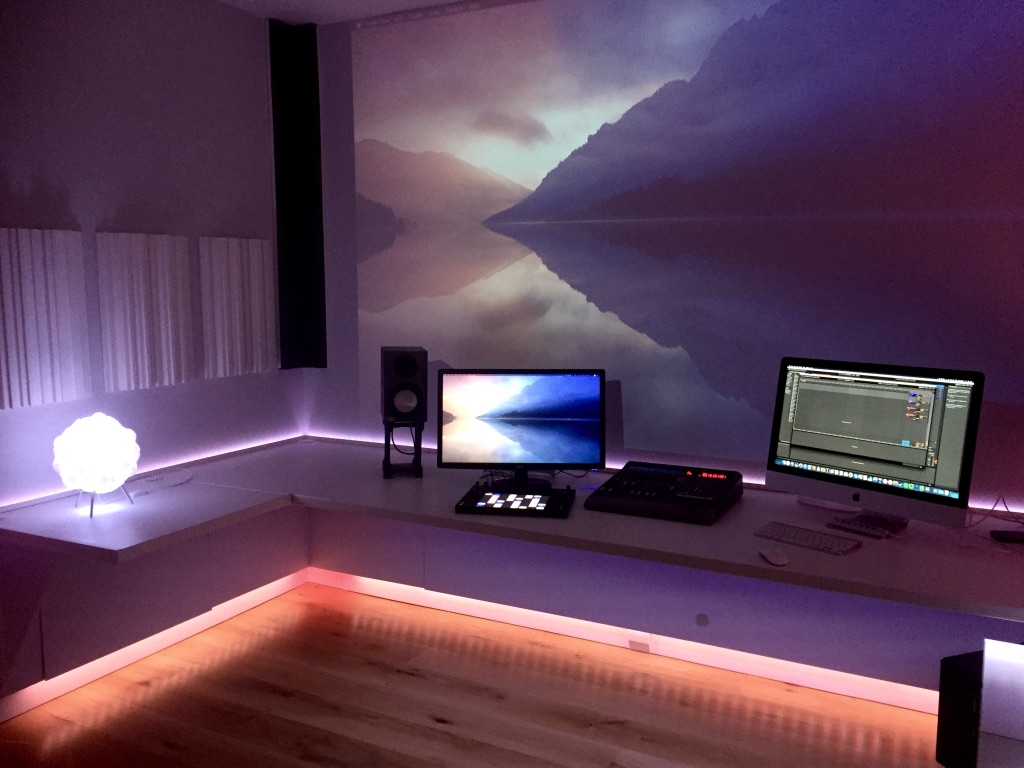
Am looking forward to this event and the opportunity to do something different and fun with the excellent Ensemble Montage.
What does the skyline of New York sound like? How can you make a composition from your sleep patterns or blood cells? Music can be made from anything we find around us, from our names or birth dates to our cells, from atoms to stars. Composer and guitarist Milton Mermikides presents the fascinating origins and history of data sonification – the translation of information or patterns into sound and music – as well as a selection of his own compositions derived from sleep cycles, viruses, paintings, exoplanetary moons, traffic patterns and other ‘non-musical’ data. In addition, a string trio of the Ensemble Montage will demonstrate how these data sound and perform a new composition based on ‘the hidden music’ of Noorderzon Performing Arts Festival. Discover how music can reveal the patterns in the natural world, and give us both a theoretical and aesthetic appreciation of everything around us.
For students and subscribers of Studium Generale tickets are € 5,-